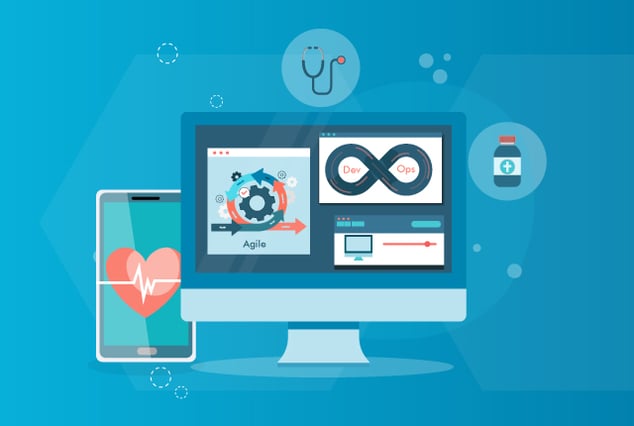
No healthcare software platform is on its own island. All technology must work together and communicate with consistent clarity in the healthcare industry, no matter what company develops which product. And that technology must provide accurate results to all end-users in any kind of circumstance.
That’s because the stakes are high for healthcare software. A failure in meeting strict patient data security and privacy requirements for HIPAA compliance can lead to expensive legal consequences for your company. Even worse, gaps in the software system can be vulnerable to security threats or transmitting insufficient data when patients need it most.
Healthcare software testing shouldn’t be scary. After all, it’s this technology that can save lives and improve healthcare practices for all. Be part of the solution by following these six healthcare software testing best practices that guarantee better results.
1) Healthcare Software Testing Domain Expertise
It’s no easy feat being a tester of healthcare software when that system must support a complex architecture, multiple workflows and an incomprehensible amount of data. A tester must have a solid background of experience, training and required certifications just to have a seat at the table. They also have to understand business workflows and have the ability to uncover the root cause of any software issue – well before it’s released to end-users.
In short, a strong tester in healthcare software testing is hard to find.
Yet, disastrous results can occur when selecting healthcare software testers who are not familiar with the industry. Testers lacking in healthcare qualifications spend more time trying to understand how the system works instead of testing the software and reporting critical defects, leading to possible missed deadlines, insufficient testing and lower software quality.
QA professionals must have some expertise in the healthcare software testing domain in order to deliver effective results. Your team can achieve this through the following strategies:
- Provide engineers sufficient product and testing tool training
- Confirm your team has in-depth understanding of the project’s requirements and business logic
- Conduct exploratory testing sessions to verify team’s understanding of software expectations
- Combine your in-house testing resources with an experienced, objective QA services provider with strong healthcare testing domain expertise
2) Requirements Gathering & Test Plan Strategies
Standard quality assurance procedure is not enough in the healthcare industry. Specific requirements are demanded out of healthcare software testing so that product evaluation ensures its compliance with strict regulations, user-friendliness, seamless infrastructure integration and the ability to provide data privacy and security.
That’s not all. Testing requirements must also address the needs and experience for all levels of users. This includes providers (such as hospitals, clinics and medical centers), healthcare recipients (or patients), intermediaries (such as insurance companies), solution vendors and regulatory authorities. The goal is to deliver a simple, stress-free experience for all users of the software, all while maintaining compliance, data privacy and safety requirements.
With the right test plan strategy in place, all of this can be achieved. Verify that all crucial requirements pass these different test sets:
- Performance testing – Does the healthcare software respond fast enough when the network doesn’t perform at optimal levels? Include test cases that address the software’s scalability, architecture and tuning.
- Vulnerability assessment and penetration testing (VAPT) – Can the healthcare software safeguard personal financial records from hackers and attempted security attacks?
- UX testing – Is the healthcare software intuitive and easy to use for all user cases?
- Localization testing – Does the healthcare software satisfy strict regulations of specific locales?
- Conformance testing – Does the healthcare software comply with security requirements including HIPAA and FDA regulations?
Automated testing is often incorporated in test cases for the above testing. This allows testers to confirm that all scenarios within the software pass while cutting costs and time to market.
3) Setting Security Standards at the Start
The healthcare industry is known for its strict regulatory standards and heavy monitoring requirements—and for good reason. Governing bodies such as HIPAA and the FDA work hard at preserving the quality of care and the security of patient data, and this can only be ensured with tight regulations and upheld rules. And with data privacy laws spanning states and industries, healthcare software must comply with even more security regulations.
Sadly, healthcare software testing can fall short of adhering to industry security requirements. Insufficient testing on the interoperability of electronic health information can jeopardize entire data systems when pushed to market. And testers are often not well-versed on standards like FDA, HL7, DICOM, CMMI and ISO, leading to gaps and security issues in the healthcare software.
Setting up these security standards at the beginning of a project can remove these issues from the testing process.
- Focus test cases on each and every healthcare standard required to be supported by the application to confirm application compliance
- Perform end-to-end testing to ensure sensitive information such as medical and billing records are secure within the software
- Dedicate time and resources to educating all manual testers on healthcare standards so that any issues can be easily recognized during QA testing
4) Leverage a Comprehensive Testing Framework
There’s a lot of ground to cover when it comes to healthcare software testing—payer systems, clinical documentation management, patient apps and medical device software, just to name a few. And testing healthcare software without a set of strict guidelines and rules for test cases can only guarantee missed steps, mistakes and misallocation of time and resources.
Your testing strategy must be as diverse and complex as your healthcare software. Testing success starts with implementing the right testing framework at the start of a project so that nothing is missed before market launch, including:
- Functional testing – Can the healthcare software transmit correct information securely in any kind (and unlikely) situations?
- Data-driven testing – Does the healthcare software handle patient information accurately and safely, despite user volume and scenario?
- Authentication validation – Do all security features within the healthcare software perform optimally in all scenarios?
- Repetitive testing – Does the healthcare software guarantee accuracy of the application’s processes, no matter how many test cases are executed?
- Multi-platform verification – Does the healthcare software perform bug-free across all platforms, devices and browsers?
- Report verification – Can your team quickly identify and resolve any issue within the healthcare software?
Because a comprehensive testing framework requires a lot of time and attention, it’s highly recommended to incorporate automated testing within your QA strategy. This allows your team to process the necessary volume of data across multiple environments, platforms and operating systems without slipping on launch deadlines.
5) Document, Document, Document
When in doubt, document everything. That’s easier said than done during healthcare software testing when so much needs to be tested, so many on-the-spot changes need to be made and so little time is available to write it all down. All it takes is one random compliance audit though to send your teams scrambling for documentation, trying to remember who did what by when and experiencing a big disruption to your workflow.
Documentation can also save an organization time and money, not to mention make testing easier and more systematic. Strong documentation ensures the quality of the healthcare software, that tests are executed as accurately as possible, that no stone is unturned.
How can documentation save time when there’s no time to put words on paper?
The key here is implementing the practice of documentation from the start of a project. Define rules on when documentation needs to occur (for example, if A happens, then B should be documented). Develop standard templates for each kind of documentation so that recordkeeping is consistent and an easy pattern for your team. Rely on documentation, not individuals, to supply any key information throughout the process, no matter how insignificant that information may seem.
Not sure where to start? Practice documenting the following during your healthcare software testing to see how much more visibility your team gains throughout the testing cycle:
| Test design document | Test plan |
| Test case specification | Test logs |
| Test strategy | Bug reports |
| Test summary reports | Test data |
| Weekly status report | Test analysis |
| User documents | Release changes |
| User acceptance report | Code changes |
| Risk assessment report |
6) Lockstep Coordination with Development Team
Traditional testing methodology claims that testing is an isolated process out of step with the development team. However, issues quickly add up when healthcare software testing doesn’t align with development. When developers are left out of the QA process, customer empathy quickly declines across the development team and issues in the code base can be costly the longer they linger in the system.
The best healthcare software product can only be delivered by sync communication with executed activities across both testing and development teams. This can be achieved by encouraging an atmosphere where all team members see themselves on the same team, not separate teams on one project. With this mindset, peers are eager to work across teams, despite personal roles in the project, in order to enhance communication, software quality and product delivery.
Your team can successfully deliver healthcare software error-free and stress-free by working alongside a professional QA services provider like QASource. Our team offers healthcare domain expertise and leading software testing technologies to guarantee that your product achieves its market potential. We also help you cover all industry standards to ensure all healthcare regulations are met. Get in touch with a QASource expert today.





